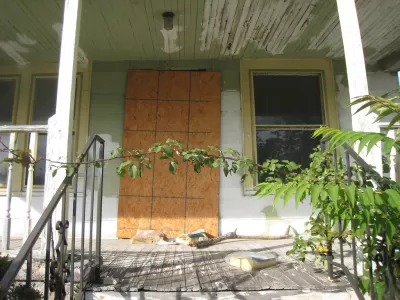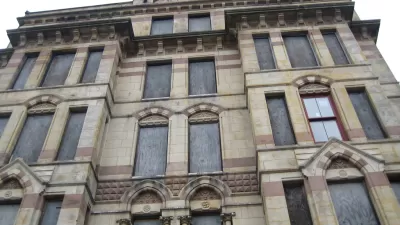Mobile, Alabama, has changed the way it deals with blight, and the results have been substantial.

Hana Schank explores the legal and policy changes in Mobile, Alabama, that have helped the city turn around a blight problem that was consuming neighborhoods, exacerbating segregation, and hindering economic development.
The city's innovation team, a project funded by Bloomberg Philanthropies, and a mayor who made blight a priority have been instrumental in altering how blight is defined, identified, and addressed as well as the legal underpinnings related to ownership of properties.
The innovation team started identifying "blight zones," instead of individual structures, and developed an index that has helped the city’s blight task force more effectively pinpoint properties where action is needed. The city also stopped issuing fines and instead started giving owners the opportunity to make repairs. If they failed to do so, the city would take on the task and then place a lien on the property for the costs.
Schank details the history of the onerous state property laws that made it difficult for the city to get new owners into repaired homes. "Last year, prompted in large part by the Mobile innovation team’s work, the Alabama state house passed HB430, which allows cities to use municipal liens, rather than tax delinquency, to claim ownership of a property."
The number of blighted properties in Mobile has dropped by almost half in four years, says Schank. "This is the story of how one city reduced blight, but it is also the story of what happens when cities think differently about how to solve their problems, when politicians are willing to embrace policies that might not line up with the party line, when city workers look beyond band-aid solutions."
FULL STORY: Blight is eating American cities. Here’s how Mobile, Alabama, stopped it

Alabama: Trump Terminates Settlements for Black Communities Harmed By Raw Sewage
Trump deemed the landmark civil rights agreement “illegal DEI and environmental justice policy.”

Study: Maui’s Plan to Convert Vacation Rentals to Long-Term Housing Could Cause Nearly $1 Billion Economic Loss
The plan would reduce visitor accommodation by 25% resulting in 1,900 jobs lost.

Why Should We Subsidize Public Transportation?
Many public transit agencies face financial stress due to rising costs, declining fare revenue, and declining subsidies. Transit advocates must provide a strong business case for increasing public transit funding.

Paris Bike Boom Leads to Steep Drop in Air Pollution
The French city’s air quality has improved dramatically in the past 20 years, coinciding with a growth in cycling.

Why Housing Costs More to Build in California Than in Texas
Hard costs like labor and materials combined with ‘soft’ costs such as permitting make building in the San Francisco Bay Area almost three times as costly as in Texas cities.

San Diego County Sees a Rise in Urban Coyotes
San Diego County experiences a rise in urban coyotes, as sightings become prevalent throughout its urban neighbourhoods and surrounding areas.
Urban Design for Planners 1: Software Tools
This six-course series explores essential urban design concepts using open source software and equips planners with the tools they need to participate fully in the urban design process.
Planning for Universal Design
Learn the tools for implementing Universal Design in planning regulations.
Smith Gee Studio
Alamo Area Metropolitan Planning Organization
City of Santa Clarita
Institute for Housing and Urban Development Studies (IHS)
City of Grandview
Harvard GSD Executive Education
Toledo-Lucas County Plan Commissions
Salt Lake City
NYU Wagner Graduate School of Public Service




























